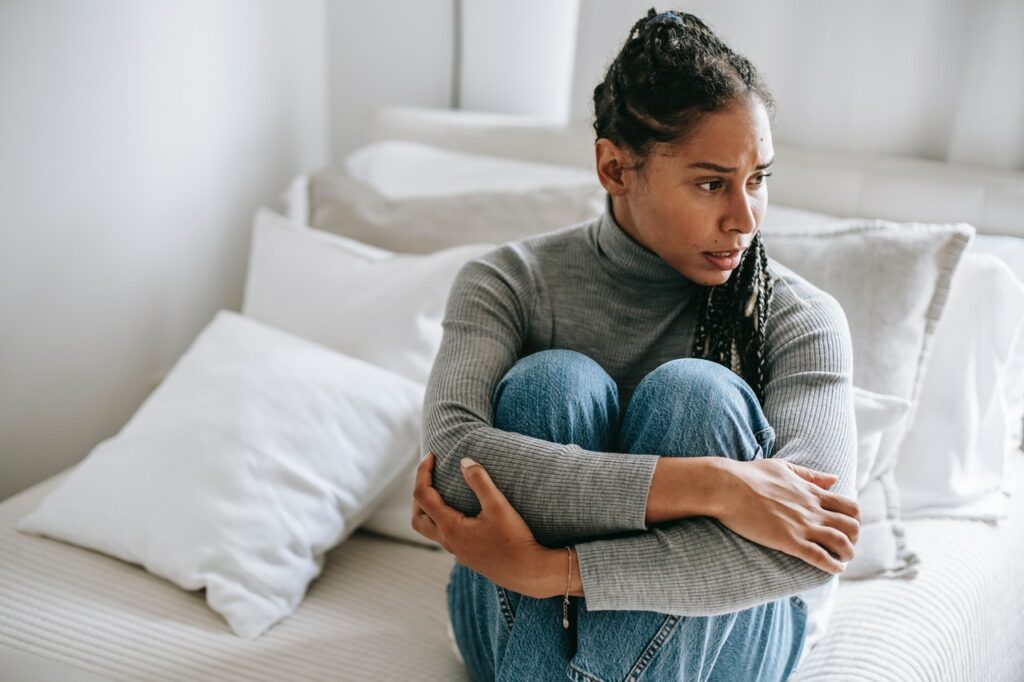
How To Cope With Your Anxiety About Anxiety
I laid my head back on the back of the recliner and said to my husband, “ My anxiety is causing me anxiety!” I said it in a humorous way, but I think there was some truth to it too. Have you ever felt that way? If you have, stay tuned because we will look at how to cope with your anxiety about anxiety.
What exactly is anxiety about anxiety?
Basically, it is anxiety you feel when you think and worry about your anxiety symptoms. It’s not your main worry, but rather the fear that develops secondary to it. And it plays a forcible role in intensifying the uncomfortable feelings of fear.
Is it normal?
Yes, in many situations, secondary anxiety is a normal reaction to the discomfort you are feeling in scary situations. Nevertheless, fearing your experience is not helpful and will indeed make it worse.
What else should I know?
- Believing that you can’t handle how you feel or that your anxiety is dangerous only fuels your emotions and escalates them. For example, when you worry about feeling frustrated, you generally feel more frustrated, or when you worry about feeling anxious, you feel more anxious. Your beliefs about stress can be more damaging than stress itself.
- You might think you can’t handle your emotions, but you can. You might not want to, but have faith that you can do it. Remember, anxiety lives in the future. It is rife with the “what-ifs” and causes you to consider all the negative possibilities. To give you the confidence you can handle your feelings, look back at times you have tolerated your emotions, even if it wasn’t pretty or graceful and tell yourself, you can do it again.
- Avoiding the things you fear the most often creates more anxiousness than facing your fears head-on. When you use avoidance, you are cutting off opportunities to face challenges and take risks that can develop resilience, build your confidence and grow in the ability to understand, use, and manage your emotions in positive ways to relieve stress.
What can I do?
Well, I guess the short answer to that would be to stop dreading the anxiety. But that isn’t exactly helpful. So, let’s break it down some, shall we? Below are three step you can use to get you started.
1. Accept the fact that anxiety is uncomfortable but not dangerous.
It’s true. Anxiety is a natural reaction we experience when we perceive a threat to our well-being. So, you could factually say if we never experienced anxiety, that would be dangerous, and we very likely wouldn’t be alive today without it.
2. Recognize that our mind assumes that more things are threats than they really are.
Our brains are hard-wired to respond to immediate threats. And this is a good thing—if a bear is chasing us in the woods because that would be a real threat. The problem is our brains can’t tell the difference between real threats (external) and perceived (internal) threats (threats that we create in our minds, such as imagining a negative outcome for a future situation), which triggers our anxious emotions.
It’s the internal threats that are most problematic for many people. And what you focus on results in feelings in your body, creating a strong mind-body feedback loop.
Try using a grounding technique using your five senses to consciously shift your focus away from the negative thoughts, imagery, and predictions to restore calm and stay in the present.
3. Try to see anxiety as signaling a challenge instead of a threat.
It goes without saying that if there really is a threat of danger, it makes sense to escape the situation. But chances are, there really is no bear chasing you in the woods; you just feel that way.
Or here is another way of putting it. Because of the risks associated with driving, it’s good practice always to wear your seatbelt, right? However, it wouldn’t make sense to avoid driving altogether because you might have a car accident one day. That would be fearing the experience of anxiety and repeatedly avoiding a situation that triggered feelings of anxiety.
Therefore, when you see anxiety as a challenge instead of a threat, your world becomes more extensive. You’ve got to keep living. You’ve got things to do and places to see. So, go ahead, expand your horizons and surprise yourself with what you can do.
When you put an end to the dread, it will be amazing how much more calm you’ll feel!
No one deliberately sets out to shackle themselves to a lifetime of needless worry. And yet, it happens. But, the mere fact that you are reading this blog indicates you want to change that type of thinking pattern. I’m so glad you are here. Give these three steps a try. I believe they will be helpful in leading you to know you can handle your anxiety which is key to taking back control.
And lastly, working with an anxiety coach through breakthrough coaching is a great way to learn new stress relief techniques that can help you change the anxious voice within you into a calmer voice that empowers you to handle the challenge. I believe you are up to it!
Hi, I’m Kris Henderson, LPC. I want you to know that I am here to help. The easiest way to start taking control of your anxiety is to take the FREE 5-Day Anxiety Detox Challenge. If you would like more personalized support, I invite you to contact me or make an appointment online. I’d love the opportunity to cheer you on as you discover anxiety relief techniques that can train your brain to stay calm and look at life from a more balanced and less fearful perspective.
